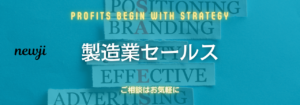- お役立ち記事
- Procurement risk management in the food industry | What are the strategies to achieve stable supply?

Procurement risk management in the food industry | What are the strategies to achieve stable supply?

Understanding Procurement Risk Management in the Food Industry
In the food industry, ensuring a stable supply chain is crucial for maintaining quality, meeting consumer demand, and achieving business success.
However, procurement risk management poses a significant challenge due to various factors such as fluctuating demand, natural disasters, and regulatory changes.
To tackle these challenges, it’s essential to understand the components and strategies involved in procurement risk management.
The Importance of Procurement Risk Management
Procurement risk management is a systematic approach aimed at identifying, assessing, and mitigating the risks associated with acquiring goods and services.
In the food industry, these risks can impact food safety, quality, cost, and availability.
Effective risk management ensures the continuity of supply, helping companies avoid disruptions that can lead to loss of revenue, damaged reputation, and even regulatory penalties.
Common Procurement Risks in the Food Industry
Several types of risks can affect the procurement process in the food industry:
– **Supply Chain Disruptions:** Natural disasters, political instability, or transportation issues can disrupt the supply chain, leading to delays or shortages.
– **Price Fluctuations:** Changes in raw material prices due to market volatility, currency fluctuations, or economic conditions can affect procurement costs.
– **Quality Issues:** Suppliers may face challenges maintaining quality standards, leading to subpar products that can damage brand reputation.
– **Regulatory Changes:** Compliance with health, safety, and environmental regulations can introduce uncertainties and require adjustments in sourcing strategies.
Strategies for Effective Procurement Risk Management
To achieve a stable supply, companies must implement effective procurement risk management strategies.
Here are several strategies to consider:
1. Diversification of Suppliers
Relying on a single supplier increases vulnerability to disruptions.
By diversifying the supplier base, companies can mitigate risks associated with supplier failures.
Building relationships with multiple suppliers spreads the risk, ensuring that the failure of one does not critically impact the supply chain.
2. Strengthening Supplier Relationships
Developing strong, collaborative relationships with suppliers is vital.
Open lines of communication help companies anticipate potential disruptions and work together to find solutions.
A strong partnership can lead to better terms, enhanced reliability, and improved responsiveness in times of need.
3. Conducting Risk Assessments
Regular risk assessments are essential for identifying potential vulnerabilities in the supply chain.
By assessing both internal processes and external factors, companies can develop contingency plans and prioritize risk mitigation efforts.
This proactive approach helps in responding quickly to unexpected events.
4. Implementing Flexible Procurement Practices
Flexibility in procurement strategy can help companies adapt to changing conditions.
This includes varying order quantities, adjusting delivery schedules, or exploring alternative materials when necessary.
Flexibility allows companies to respond to shifts in demand or supply disruptions without compromising on quality or availability.
5. Leveraging Technology and Data Analytics
Utilizing technology and data analytics provides valuable insights into the procurement process.
Advanced software can forecast demand, track inventory levels, and monitor supplier performance.
This data-driven approach allows companies to make informed decisions, optimize procurement strategies, and quickly adapt to changes in the market.
6. Establishing Contingency Plans
Having a contingency plan in place is critical to managing procurement risks effectively.
These plans outline specific actions to take in case of a supply chain disruption.
By preparing for various scenarios, companies can reduce downtime and maintain continuity in their supply chain operations.
The Role of Sustainability in Procurement Risk Management
Sustainability is increasingly important in procurement risk management.
Consumers and regulators are demanding more sustainable practices, impacting sourcing decisions.
By integrating sustainability into procurement strategies, companies can reduce risks associated with environmental impact and compliance issues.
Sustainable procurement practices also open up new opportunities for innovation and brand differentiation.
Conclusion
Procurement risk management is an essential part of maintaining a stable supply chain in the food industry.
By understanding the common risks and implementing effective strategies such as supplier diversification, strengthening relationships, and leveraging technology, companies can mitigate potential disruptions.
Furthermore, considering sustainability in procurement practices ensures alignment with current trends and expectations.
Through these proactive measures, businesses can achieve a resilient and efficient supply chain, ensuring they meet consumer needs consistently and effectively.
 資料ダウンロード
資料ダウンロード
QCD管理受発注クラウド「newji」は、受発注部門で必要なQCD管理全てを備えた、現場特化型兼クラウド型の今世紀最高の受発注管理システムとなります。
 NEWJI DX
NEWJI DX
製造業に特化したデジタルトランスフォーメーション(DX)の実現を目指す請負開発型のコンサルティングサービスです。AI、iPaaS、および先端の技術を駆使して、製造プロセスの効率化、業務効率化、チームワーク強化、コスト削減、品質向上を実現します。このサービスは、製造業の課題を深く理解し、それに対する最適なデジタルソリューションを提供することで、企業が持続的な成長とイノベーションを達成できるようサポートします。
 製造業ニュース解説
製造業ニュース解説
製造業、主に購買・調達部門にお勤めの方々に向けた情報を配信しております。
新任の方やベテランの方、管理職を対象とした幅広いコンテンツをご用意しております。
 お問い合わせ
お問い合わせ
コストダウンが利益に直結する術だと理解していても、なかなか前に進めることができない状況。そんな時は、newjiのコストダウン自動化機能で大きく利益貢献しよう!
(β版非公開)





